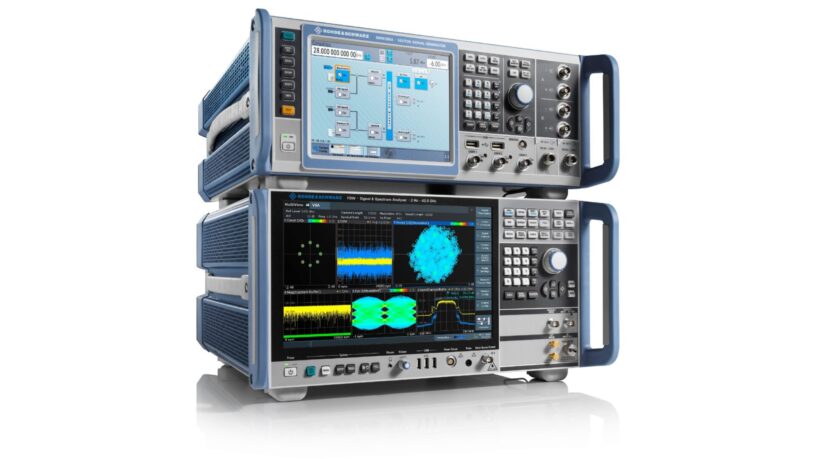Introduction to O-RAN and Its Significance
The O-RAN (Open Radio Access Network) concept is revolutionizing the way radio access networks (RAN) are designed, deployed, and managed. Unlike traditional, vendor-specific RAN solutions, O-RAN emphasizes openness and interoperability, enabling network operators to deploy components from multiple vendors seamlessly. The core principle of O-RAN is to disaggregate the traditional monolithic RAN architecture into modular components with standardized, open interfaces, fostering innovation, flexibility, and cost efficiency.
The Radio Unit (RU), or O-RU, is a crucial component in the O-RAN architecture. It handles the radio frequency (RF) processing and transmission of signals to and from user devices. The O-RU is responsible for crucial functions such as signal modulation, beamforming, and frequency conversion. By leveraging open interfaces, O-RUs can be integrated with Distributed Units (DUs) and Centralized Units (CUs) from different vendors, providing network operators with the flexibility to choose best-of-breed solutions.
Historical Context and Evolution
The evolution of RAN architectures has progressed from tightly integrated, vendor-specific solutions to the more flexible, disaggregated O-RAN architecture. Traditionally, RANs were proprietary systems, limiting the ability of network operators to mix and match components from different vendors. This vendor lock-in often led to higher costs and slower innovation cycles.
The O-RAN Alliance, established in 2018, emerged as a driving force in promoting the adoption of open standards and interfaces for RAN components. The alliance’s mission is to redefine radio access networks, making them more open, intelligent, and fully interoperable. The introduction of O-RAN has transformed the telecommunications landscape, enabling greater flexibility, reduced costs, and accelerated deployment of new technologies such as 5G.
Current Market Landscape
The O-RAN Radio Unit (O-RU) market is experiencing significant growth as network operators worldwide embrace the benefits of open RAN architectures. The demand for O-RUs is driven by several factors:
- 5G Deployment:
- The global rollout of 5G networks necessitates advanced radio units that can handle higher frequencies, massive MIMO, and increased data throughput. O-RUs are well-suited to meet these requirements due to their flexibility and scalability.
- Cost Efficiency:
- O-RUs enable network operators to reduce capital and operational expenditures by avoiding vendor lock-in and allowing the use of cost-effective hardware and software from multiple vendors.
- Interoperability and Flexibility:
- The open interfaces of O-RUs facilitate interoperability with other O-RAN components, allowing network operators to build customized, best-of-breed networks that can be easily upgraded or expanded.
- Innovation and Competition:
- The O-RAN ecosystem fosters innovation and competition among vendors, leading to the development of advanced radio units with improved performance and capabilities.
- Regulatory and Industry Support:
- Support from regulatory bodies and industry organizations for open and interoperable RAN architectures further accelerates the adoption of O-RUs.
Technical Overview of O-RU
The O-RU is a specialized hardware component responsible for RF signal processing in an O-RAN network. Its primary functions include:
- Signal Modulation and Demodulation:
- Converts baseband signals from the DU into RF signals for transmission to user devices and vice versa.
- Beamforming and MIMO:
- Utilizes advanced beamforming techniques and MIMO (Multiple Input Multiple Output) technology to enhance signal strength and coverage.
- Frequency Conversion:
- Performs frequency conversion to match the required transmission and reception frequencies for different cellular bands.
- RF Amplification:
- Amplifies RF signals to ensure adequate transmission power and coverage, especially in high-frequency 5G bands.
- Synchronization and Timing:
- Ensures precise synchronization and timing of signals, critical for maintaining network performance and reliability.
- Environmental Adaptability:
- Designed to operate in various environmental conditions, including extreme temperatures and outdoor installations.
Receive the FREE Sample Report of O-RAN Radio Unit (O-RU) Market Research Insights @ https://stringentdatalytics.com/sample-request/o-ran-radio-unit-(o-ru)-market/9958/
Market Segmentations:
Global O-RAN Radio Unit (O-RU) Market: By Company
• Fujitsu
• NXP Semiconductors
• Baicells
• Benetel
• Comba
• KMW
• MTI
• NEC
• NTS
• Xilinx
• Mavenir
• Qualcomm
Global O-RAN Radio Unit (O-RU) Market: By Type
• Single Frequency
• Multi-frequency
Global O-RAN Radio Unit (O-RU) Market: By Application
• Small Base Station
• Macro Base Station
Regional Analysis of Global O-RAN Radio Unit (O-RU) Market
All the regional segmentation has been studied based on recent and future trends, and the market is forecasted throughout the prediction period. The countries covered in the regional analysis of the Global O-RAN Radio Unit (O-RU) market report are U.S., Canada, and Mexico in North America, Germany, France, U.K., Russia, Italy, Spain, Turkey, Netherlands, Switzerland, Belgium, and Rest of Europe in Europe, Singapore, Malaysia, Australia, Thailand, Indonesia, Philippines, China, Japan, India, South Korea, Rest of Asia-Pacific (APAC) in the Asia-Pacific (APAC), Saudi Arabia, U.A.E, South Africa, Egypt, Israel, Rest of Middle East and Africa (MEA) as a part of Middle East and Africa (MEA), and Argentina, Brazil, and Rest of South America as part of South America.
Click to Purchase O-RAN Radio Unit (O-RU) Market Research Report @ https://stringentdatalytics.com/purchase/o-ran-radio-unit-(o-ru)-market/9958/
Key Market Drivers
The growth of the O-RU market is propelled by several key drivers:
- 5G Network Expansion:
- The deployment of 5G networks necessitates advanced radio units that can handle the increased capacity, higher frequencies, and diverse use cases of 5G.
- Open RAN Adoption:
- The increasing adoption of open RAN architectures by network operators drives demand for O-RUs that can seamlessly integrate into multi-vendor environments.
- Cost Reduction Pressures:
- The need to reduce capital and operational expenditures compels operators to adopt cost-effective, open hardware solutions like O-RUs.
- Government and Regulatory Support:
- Support from governments and regulatory bodies for open and interoperable network architectures fosters the adoption of O-RUs.
- Technological Advancements:
- Continuous advancements in radio technologies, including massive MIMO, beamforming, and software-defined RAN, enhance the capabilities and appeal of O-RUs.
- Network Customization:
- The ability to customize and optimize network configurations using modular O-RUs provides operators with the flexibility to meet specific performance and coverage requirements.
Market Challenges
Despite the numerous advantages, the O-RU market faces several challenges:
- Interoperability Issues:
- Ensuring seamless interoperability between O-RUs and other O-RAN components from different vendors can be complex and requires rigorous testing and standardization.
- Security Concerns:
- The integration of multi-vendor components in open RAN networks introduces potential security vulnerabilities that need to be addressed through robust security measures.
- Regulatory Hurdles:
- Compliance with regulatory requirements and standards can be challenging, especially in regions with strict telecommunications regulations.
- Technical Complexity:
- The technical complexity of deploying and managing O-RAN networks, including O-RUs, necessitates specialized expertise and training.
- Market Fragmentation:
- The presence of multiple vendors and varying standards can lead to market fragmentation, complicating the deployment and integration of O-RUs.
About Stringent Datalytics
Stringent Datalytics offers both custom and syndicated market research reports. Custom market research reports are tailored to a specific client’s needs and requirements. These reports provide unique insights into a particular industry or market segment and can help businesses make informed decisions about their strategies and operations.
Syndicated market research reports, on the other hand, are pre-existing reports that are available for purchase by multiple clients. These reports are often produced on a regular basis, such as annually or quarterly, and cover a broad range of industries and market segments. Syndicated reports provide clients with insights into industry trends, market sizes, and competitive landscapes. By offering both custom and syndicated reports, Stringent Datalytics can provide clients with a range of market research solutions that can be customized to their specific needs.
Reach US
Stringent Datalytics
+1 346 666 6655
Social Channels:




Leave a Reply